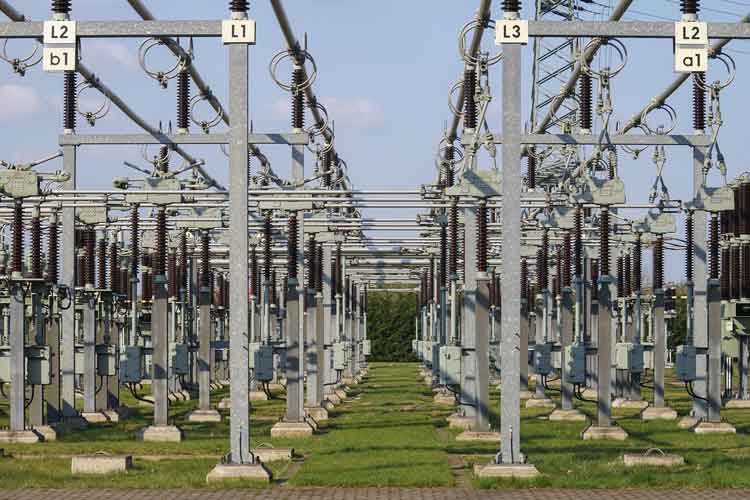Big Bang machine near restart after repairs
By Associated Press
High Voltage Maintenance Training Online
Our customized live online or in‑person group training can be delivered to your staff at your location.

- Live Online
- 12 hours Instructor-led
- Group Training Available
This time the European Organization for Nuclear Research, known as CERN, is taking a cautious approach with the super-sophisticated equipment, said James Gillies. It cost about $10 billion, with contributions from many governments and universities around the world.
Scientists expect to send beams of protons around the 27-kilometer (17-mile) circular tunnel housing the Large Hadron Collider, or LHC, but they have refrained from setting a date. That stands in stark contrast with the hype of the September 10, 2008, launch, when the startup was televised globally.
Some scientists blamed the failure nine days later on keeping to that schedule because the problem section had yet to be fully tested.
The first day of last year's launch went unusually well: Beams of protons were quickly sent in both directions, happily surprising many of the scientists around the world used to delays and problems with such superconducting equipment.
But nine days later a single electrical splice overheated because it had been badly soldered, and disaster struck. Fifty-three of 1,624 large superconducting magnets — some of them 15 meters (50 feet) long — were damaged and had to be replaced.
An electric arc punctured the container holding the liquid helium used to keep the collider at a temperature colder than outer space for maximum efficiency. Six tons of helium leaked out, overpowering the relief valves and adding to the damage.
CERN had to clean "soot-like dust" from the firehose-size pipes meant to contain an extreme vacuum so that nothing would obstruct the proton beams passing through.
"It was a disaster, no question about it," said Chip Brock, a physics professor at Michigan State University. But he said CERN had taken a number of innovative steps to avoid a repeat.
"This problem won't happen again," he told The Associated Press.
The current caution gives a little more time to the collider's chief rival, the United States' Tevatron at Fermilab outside Chicago, to beat the European machine to the discovery of the elusive Higgs boson. The winner of that race would almost certainly be in line to win the Nobel Prize for physics.
It is a friendly rivalry with many of the scientists working both at Fermilab and at CERN, which is run by 20 European countries with support from other nations, including observers Japan, India, Russia and the U.S. that have made big contributions to the LHC.
The Higgs is at this stage only a theoretical particle or field that gives mass to other particles — and objects and creatures — in the universe.
Once the two beams of protons are tightly packed into hairline shapes by the magnets, they will whiz in opposite directions at near the speed of light until they are forced to collide. That is expected to be about December 1, a week after the beams circulate at low energy.
"The plan is to do some collisions at that energy, but not very many," said Gillies. "That just allows the experiment to get some collision data that they can work with for calibration purposes."
The first scientific experiments in Geneva are expected in January, when the LHC is to start its search for a better understanding of the subatomic makeup of matter and the universe.
The LHC is supposed to pull ahead of the Tevatron's energy of 1 trillion electron volts, or TeV, by January. CERN aims to continue ramping up the energy to 3.5 TeV in each direction after that and start the experiments. That will make it easier to see what happens when the subatomic particles collide in vast detectors in rooms the size of cathedrals — 100 meters (300 feet) below ground.
The scientists hope the fragments that come off the collisions will show on a tiny scale what happened microseconds after the so-called Big Bang, which many scientists theorize was the massive explosion that formed the universe. The theory holds that the universe was rapidly cooling at that stage and matter was changing quickly.
Experts have taken more than a year to repair the damage and improve protections for the system that will guide beams of protons 11,000 times a second around the tunnel.
"It's a lot better than it was last year," said Gillies.
The collider has a new "quench" system to remove electricity instantly if something goes wrong. New detectors are much more effective, able to note a variation of a nano-ohm, a billionth of an ohm, a tiny measure of electrical resistance. New helium vents have been installed to curtail any damage from a leak. All 10,000 electrical splices around the ring have been tested.
Physicists have used smaller, room-temperature colliders for decades to study the atom. They once thought protons and neutrons were the smallest components of the atom's nucleus, but the colliders showed that they are made of quarks and gluons and that there are other forces and particles. And scientists still have other questions about antimatter, dark matter and supersymmetry they want to answer with CERN's new collider.
The Superconducting Super Collider being built in Texas would have been bigger than the LHC, but in 1993 the U.S. Congress canceled it after costs soared and questions were raised about its scientific value.
Despite the problems thousands of physicists around the world insist the LHC will work and that it is crucial to mankind's understanding of the universe.
"These state-of-the-art accelerator projects are one-of-a-kind devices that push the envelope," said Catherine Westfall, an American collider historian. "I do not for a second think the LHC is too complicated to work, that it won't work, or that it is not worth the investment.
"It will open new frontiers and bring us new knowledge — there is absolutely no doubt about that."
Joseph N. Tatarewicz, a science historian with the University of Maryland, said technology was now so complex to push the limits of science that it takes a long time and large budgets to develop and run them.
The United States' Hubble telescope "took nearly three years after launch before it became so productive and even beloved," Tatarewicz said.
"This is probably the most complicated project ever undertaken," said Brock, noting that the extremely large equipment has to be highly precise and supersensitive — and all made to order.
"It's daunting. But, it's absolutely doable," said Brock.











